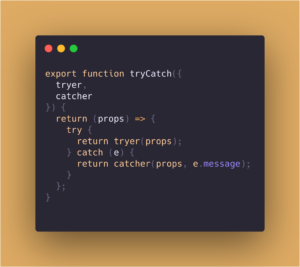What is JavaScript Language? Its Development, Powers & Uses
What is JavaScript Language and It’s Development, Powers & Uses? From the invention of JavaScript to its development throughout the years, we cover everything in this article and expand the uses, pros and cons of the language.
What is JavaScript Language?
JavaScript started as a simple scripting language but quickly took on a life of its own. Within a few years of its creation, nearly every major web browser supported JavaScript, and it became a web standard called ECMAScript.
Fast forward to today, and JavaScript powers over 90% of all websites. It brings games to life, flies’ drone, runs web servers, creates slick mobile apps – you name it. JavaScript left its nerdy roots behind and became the Brad Pitt of programming languages.

Of course, JavaScript didn’t become a superstar overnight. Let’s walk through some of the key moments in its growth from scripting language to world domination:
JavaScript Development Through Years:
JavaScript, one of the most important programming languages today, has a fascinating history. Let’s take a closer look at its early development and key milestones.
1995: Baby JavaScript is born at Netscape. The name rides on Java’s coattails even though they’re totally different.
1997: JavaScript becomes standardized as ECMAScript. Fancy!
Early 2000s: Browser Wars push rapid innovation. Firefox and Chrome bring competition.
2009: ECMAScript 5 makes JS more robust. Templating systems like Handlebars appear.
2015: ECMAScript 6 (ES6) adds major improvements like arrow functions and promises.
Today: With versatile frameworks like React, Vue, and Angular, JavaScript expands beyond browsers into mobile, IoT, VR and more.
Okay, now that we’ve seen JavaScript’s glow-up timeline, let’s get into the technical nitty-gritty:
JavaScript’s Early Days
- 1995 – Brendan Eich invents JavaScript for Netscape 2
- 1997 – JavaScript becomes standardized as ECMAScript
- ES1 supported in Internet Explorer 4
ECMAScript Evolution
- ES1: JavaScript spreads its wings in 1997.
- ES2: Brings more flair in 1998.
- ES3: Drops in 1999 with new features.
- ES4: Abandoned like a bad haircut in 2008.
- ES5: Makes a comeback in 2009, more stylish than ever.
- ES6: JavaScript perfects its image with classes and promises in 2015.
Browser Support
- Internet Explorer 5 first to support ES2
- Internet Explorer 5.5 first with ES3
- Firefox 1 and Netscape 6 in 2000 used JS 1.5
- Full ES5 support by 2014
- ES6 support by 2017
Standardization
- 1996 – Netscape & Brendan Eich bring JavaScript to ECMA as TC39
- ECMA-262 Edition 1 released June 1997
Relationship to Java
- JavaScript just rode Java’s name for marketing despite being unrelated.
ECMAScript vs. JavaScript
- ECMAScript is the standardized version.
- Other languages like JScript and ActionScript based on it.
- But JavaScript is the common implementation.
JavaScript Today
- Used by over 64.9% of devs.
- Runs over 90% of websites.
- Expanded from scripting into robust general-purpose language.
What Can You Do With JavaScript:
JavaScript expanded way beyond its roots in web development into a versatile language powering all kinds of applications. But how exactly does it work its magic? Let’s explore some key uses of JavaScript:
Web Pages
JavaScript shakes up traditional static web pages by letting them dance. It brings boring sites to life with janky animations, unwelcome popups, and menus that rattle open and closed. JavaScript keeps the web lively!

Web Applications
Slick web apps like Gmail and Google Maps would be useless without JavaScript. It lets you smoothly drag routes, open endless nested email threads, and dive into Street View without frustrating lag or endless reloads. JavaScript brings that silky responsiveness.
Mobile Applications
With JavaScript frameworks like React Native, you can write mobile apps for iOS and Android with a single codebase. JavaScript communicates with native components under the hood so your Tinder-for-dogs app looks seamless on both platforms. Fancy!
Server-Side Code
Node.js lets JavaScript break out of the browser dungeon to run web servers. It brings LinkedIn and Netflix the speed and scalability they need. Not bad for a language designed for animating buttons!
Presentations
Jazz up those corporate slideshows with JavaScript! Libraries like Reveal.js and Bespoke.js let you make snazzy web-based presentations with seamless scrolling, custom themes, and fun transitions. Outdo PowerPoint!
Art Projects
Unleash your inner Picasso! With HTML canvas and JavaScript, you can create wild generative art, interactive installations, and browser-based games right in the browser. No fancy art school required.
Smartwatch Apps
Even tiny smartwatch screens come alive with JavaScript. Pebble.js and more allow you to build mini wearable apps that display weather, fitness tracking, notifications, and more on sleek connected wristwear.
Drones
With boards like Tessel and Johnny-Five along with JavaScript, developers can make drones dance through the air on programmed routes for photography, recreation, and more.
IoT Gadgets
From smart home hubs to connected cars, JavaScript keeps our futuristic gadgets humming. Its flexibility allows it to handle everything from voice commands to facial recognition.
JavaScript evolved from simple scripting to a flexible language powering the full stack. It allows rapid prototyping and expressive coding paradigms that empower developers. But like all things in life, it too has a Yin-Yang (Pros and Cons)
Pros of JavaScript:
Speed
JavaScript is an interpreted language, meaning it skips compilation and can execute code immediately. This allows JavaScript programs to kick into high gear faster than lumbering compiled languages like Java.
Reduced Server Load
With JavaScript running client-side in the browser rather than on the server, websites can slim down their backend infrastructure. JavaScript to the rescue for scalability!
Ease of Use
With its straightforward syntax, It delivers an easy on-ramp for new developers compared to more complex languages. Less time spent learning means faster product development!
Rich Interfaces
From drag-and-drop to sliders and beyond, It empowers developers to create engaging interfaces that wow users. Take that, boring old HTML forms!
Versatility
JavaScript flexes its muscles across the full stack. It plays nicely with databases like MongoDB, handles backend logic with Node.js, and powers frontend UI. JavaScript does it all!
Extended Functionality
Like a crafty mechanic, It leverages addons like Greasemonkey to inherit extra superpowers. More capabilities without extra coding!
Interoperability
JavaScript socializes well with other languages, enabling integration across the development ecosystem. It brings its own strengths while letting other languages shine too!
Popularity
With widespread usage at leading sites like Google and Amazon, JavaScript has become a cornerstone of web development. The community support is invaluable!
Platform Independence
It gets along with all major web browsers, avoiding messy versioning and compatibility issues. Write once, run anywhere!
Powerful Frameworks
JavaScript boasts an all-star roster of frameworks like React, Angular, and Vue to boost development. The tools just keep getting better!
Programming Features
Even with its friendly facade, JavaScript brings programming essentials like conditionals, loops, and functions to the table.
Dynamic Responses
It reacts in real-time to user events like clicks or scrolls, enabling snappy interfaces without reloading. Hello rich web apps!
Regular Updates
The ECMA International team tirelessly improves the language with new JavaScript features and tools. Talk about ongoing support!
Cons of JavaScript:
While JavaScript is versatile and powerful, no technology is perfect. Let’s dive into some of the challenges developers face with JavaScript:
Client-Side Security
With all the code exposed on the client, it’s vulnerable to exploitation through bugs or oversights. Security requires rigorous testing and best practices.
Browser Support
Differences in implementation across browsers can lead to inconsistent behavior and compatibility headaches. Cross-browser testing is critical.
Debugging Difficulties
Debugging can be trickier compared to languages like C++ with robust dedicated tools. The debugging process may be less efficient.
UI Rendering Performance
The combination of JavaScript and DOM rendering can slow down UI performance, especially for complex visuals. Optimization helps.
Visible Source Code
It’s client-side nature exposes code to the public, raising concerns around IP protection. Obfuscation provides some mitigation.
Brittle Error Handling
A single error can crash an entire website. Browsers are fault-tolerant, but resilience requires rigorous input validation.
Cross-Browser Inconsistency
Variation in implementation across browsers requires extra testing and abstraction to smooth over differences.
Complex Large Apps
Building extensive applications in vanilla can become cumbersome without help from frameworks and compilers.
Dynamic Type Conversion
JavaScript’s loose typing requires constant data conversion under the hood, impairing performance. TypeScript helps here.
Of course, developers have crafted solutions to mitigate these weaknesses over the years. With sound practices, It remains a cornerstone of modern web development.
Conclusion:
The story of JavaScript has been one of continuous evolution, defying expectations and adapting to emerging trends. As new frontiers like VR, IoT and AI continue to develop, JavaScript is poised to remain at the forefront. 25+ years after its conception, It’s future looks as bright as ever.
The language that started off as a “toy” scripting addition has become an indispensable part of the web development toolkit. It’s mix of strengths and flaws make it a technology of contrasts, but one that the community continues to nurture and improve. For all its quirks, JavaScript retains its position as the language powering the web – both today and for years to come.
It is an amazing skill to have in your arsenal, whether you are looking for a job or programming as a hobby. You can learn JavaScript for free at @https://www.w3schools.com/js/DEFAULT.asp
Continue Reading: What Is Python? – What Can You Do With Python Language
